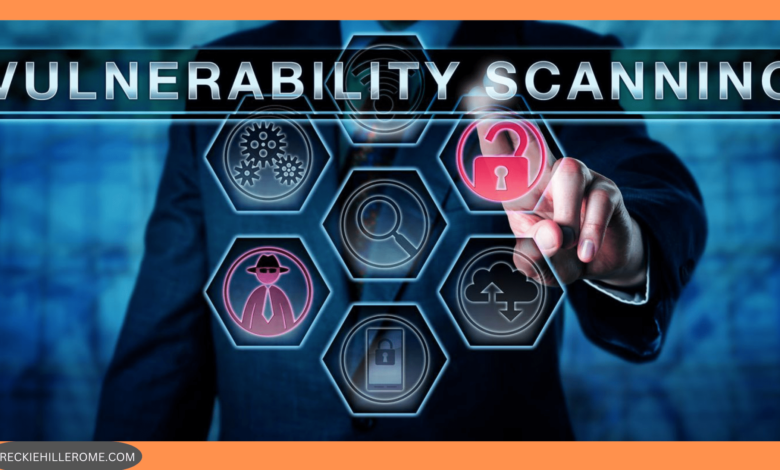Strengthening Defenses: A Guide to Effective Vulnerability Scanning

It is necessary to defend against shifting cyber threats. It demonstrates how proactive vulnerability screening prevents intrusions. Methodically finding and correcting network, system, and application vulnerabilities decreases security threats. This proactive approach boosts security and fulfills regulations. This extensive guide helps firms understand vulnerability scanning and implement appropriate safeguards. Modern cybersecurity involves. By gradually resolving vulnerabilities, companies can increase security and meet standards.
The need for proactive security measures
In the digital era, proactive security is crucial. Enterprises must emphasize prevention to safeguard digital assets from increasingly sophisticated and frequent assaults. promotes proactive security, including vulnerability detection. By proactively resolving network, system, and application vulnerabilities, organizations may reduce cyber threats. Companies may avert data breaches, financial losses, and reputational damage via vulnerability scanning. Secure organizations can defend their digital infrastructure.
Key components of effective vulnerability scanning
1. Complete coverage
Organizations should examine network devices, servers, endpoints, and apps for vulnerabilities. Complete ecosystem coverage allows organizations to find vulnerabilities and prioritize repairs.
2. Constant watching
We must check systems for vulnerabilities because cyberattacks can happen at any time. Automated vulnerability scanning technologies let firms schedule periodic scans to find and address new vulnerabilities. Attackers have less time to exploit flaws with a proactive technique.
3. Prioritize risk
Not all vulnerabilities are identical. During vulnerability screening, classify vulnerabilities based on severity and organizational impact. Prioritizing remediation by risk level helps organizations deploy resources and fix the biggest problems.
Implementing best practices for vulnerability scanning
1. Choose a tool.
To produce reliable results, vulnerabilityscanning tools are required. When comparing options, consider coverage, usability, reporting, and security infrastructure integration.
2. Scan Parameters
Before scanning, configure vulnerability scan parameters based on corporate goals. This requires selecting scan frequency, coverage, and result granularity.
3. Results Interpretation
To comprehend the vulnerability scan results, one must first understand the vulnerabilities and their corporate effects. Security specialists should carefully analyze scan results, assess vulnerabilities by severity, and prioritize the most serious concerns in a remediation process.
The importance of vulnerability scanning
Scan vulnerabilities to enhance cyber defenses. We can scan an organization’s network, systems, and applications for holes and access points to prevent bad actors from exploiting vulnerabilities. This method reduces cyberattacks, data breaches, and financial and reputational damages. Companies must scan for vulnerabilities to meet industry and regulatory standards. Companies meet PCI DSS, HIPAA, and GDPR security requirements by scanning routinely. Remediating the most significant vulnerabilities early is another benefit of vulnerability screening. Effective resource allocation maximizes cybersecurity operations in this customized strategy. Active risk management through vulnerability scanning protects businesses against developing cyber threats.
Proactive risk management
Any cybersecurity plan needs risk management, especially as vulnerability screening enhances defenses. Proactive risk management helps organizations anticipate and minimize digital security concerns, where threats grow swiftly and criminals exploit weaknesses. Proactive risk management may improve security and decrease data breaches, financial losses, and reputational damage.
Organizations proactively detect and patch security vulnerabilities in networks, systems, and applications. Organizations can identify cyberattack entry points by scanning for vulnerabilities and misconfigurations. Firms may prioritize repairs, manage resources, and reduce risk with this proactive technique. Proactive risk management with vulnerability scanning helps organizations safeguard their digital assets from emerging attacks.
The fundamentals of vulnerability scanning
It detects and patches network, system, and application vulnerabilities. Cyberattacks are real, and vulnerability assessment is crucial. The importance of security. It encourages proactive measures to increase defenses and decrease cyberattack risk.
By scanning network devices, servers, endpoints, and online apps, organizations may decrease risks. Automation scans IT infrastructure for known vulnerabilities using signature or pattern databases. By including vulnerability scanning in cybersecurity planning, companies can safeguard their digital assets from evolving threats. Comprehensive coverage, frequent scanning, and proactive risk management may help avoid cyberattacks.
Vulnerability scanning plays a crucial role in cybersecurity.
Cybersecurity relies on vulnerability screening to defend digital infrastructure. Organizations must increase cybersecurity against evolving cyber threats. Vulnerability scanning is essential to finding and patching vulnerabilities that bad actors may exploit. By scanning network devices, servers, and apps, organizations may uncover outdated software, misconfigurations, and unpatched security issues. With this proactive technique, companies can increase security and decrease cyberattack risk.
This highlights the significance of vulnerability screening in cybersecurity. Vulnerability evaluations can reduce risks and preserve digital assets. To enhance cyber defenses, best practices include periodic scans and IT infrastructure coverage. In a hostile digital world, proactive vulnerability assessment helps firms stay ahead of new threats and secure.
How does vulnerability scanning work?
Proactive vulnerability screening increases cyber defenses. Hackers may exploit IT infrastructure flaws with this approach. A vulnerability scan automatically evaluates network devices, servers, databases, and web applications for security flaws. Regular vulnerability screening helps avoid outdated software, wrong settings, and unpatched security issues. To prevent cyberattacks, risk management must be proactive. Compliance, industry standards, and regulatory frameworks require vulnerability assessments, making vulnerability scanning crucial to cybersecurity best practices.
Proactive vulnerability assessment boosts cyber defenses. It involves checking network devices, servers, databases, and online applications for vulnerabilities that malicious actors can exploit. Automated systems can avoid outdated software, wrong settings, and unpatched security vulnerabilities. To prevent cyberattacks, risk management must be proactive. Compliance with industry norms necessitates vulnerability screening for cybersecurity.
Finishing
Organizations may prevent new threats by methodically identifying and reducing vulnerabilities. Vulnerability assessment in cybersecurity strategies can help businesses avoid costly data breaches and cyberattacks. This guide also emphasizes the importance of regular vulnerability assessments for regulatory and industry compliance. Firms demonstrate best practices and stakeholder confidence by incorporating vulnerability screening into their cybersecurity policies. Companies can improve their cyberdefense and security awareness by following this guidance.
FAQs
1. What is vulnerability scanning, and why is it important?
The process of systematically identifying weaknesses in a network, system, or application that malicious actors could exploit is known as vulnerability scanning. Proactively addressing potential vulnerabilities before they become exploitable is crucial for maintaining the security and integrity of digital assets.
2. How does vulnerability scanning work?
Vulnerability scanning works by utilizing automated tools and techniques to scan IT infrastructure, including network devices, servers, databases, and web applications. These scans identify known vulnerabilities such as outdated software, misconfigured settings, or unpatched security flaws.
3. How frequently should we perform vulnerability scanning?
The frequency of vulnerability scanning depends on various factors, including the organization’s risk tolerance, the complexity of its IT infrastructure, and regulatory requirements. Ideally, conducting vulnerability scans regularly ensures the security posture stays current.
4. What are the benefits of vulnerability scanning?
Vulnerability scanning offers several benefits, including proactive risk management by identifying and addressing security weaknesses before they can be exploited. It also helps organizations meet compliance requirements and industry standards by demonstrating a commitment to cybersecurity best practices.
5. How can organizations integrate vulnerability scanning into their cybersecurity strategy?
Organizations can integrate vulnerability into their cybersecurity strategy by establishing a regular scan schedule, ensuring comprehensive coverage across all digital assets, and leveraging the insights gained from vulnerability scans to prioritize and address security vulnerabilities effectively.
6. What are some common problems with vulnerability scanning?
Common challenges include managing the volume of scan results, prioritizing vulnerabilities based on risk severity, and ensuring timely remediation of identified issues. Additionally, organizations may face difficulties in effectively integrating vulnerability scanning into existing IT processes and workflows.





